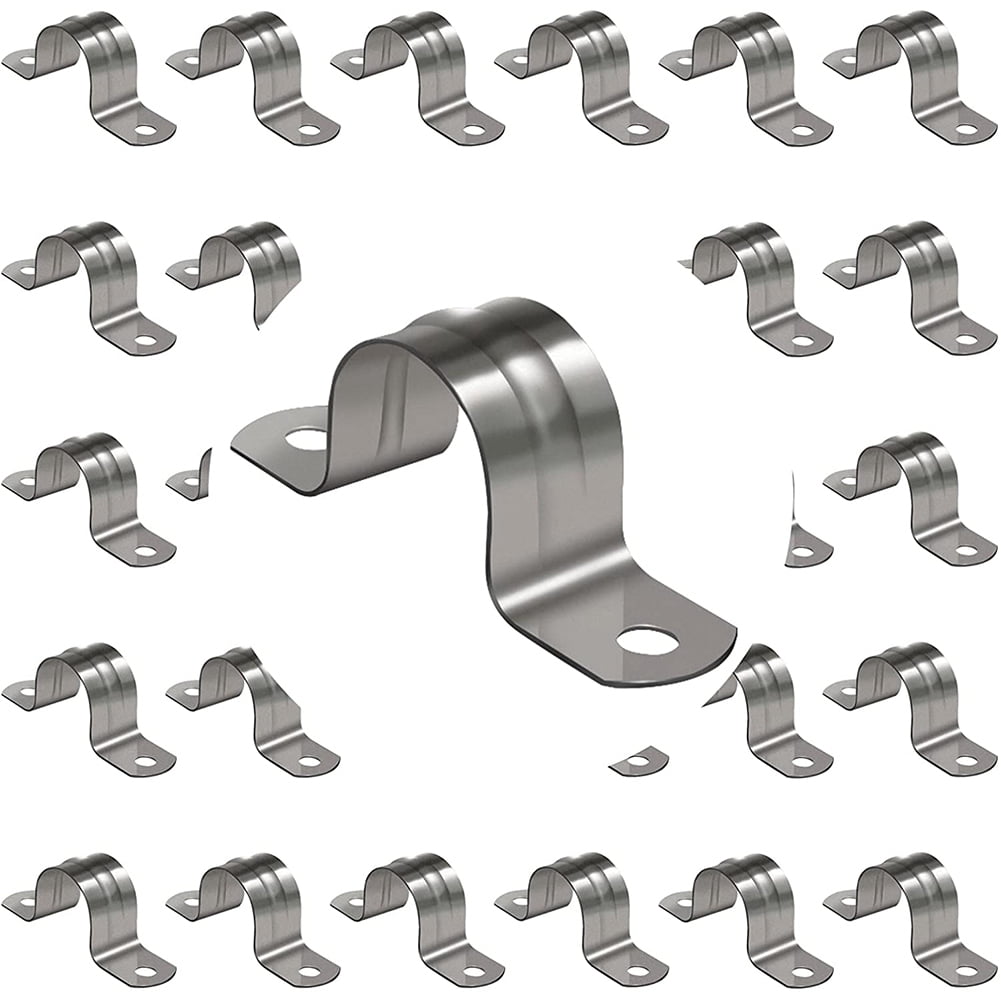


What are stainless steel pipe clamps best for? Below you’ll find a few of the more common materials used, and some examples of which is best suited to what sorts of application. There are almost as many different materials used for pipe clamps as there are varying diameters and mounting systems for them. Which pipe clamp materials are best for which jobs? However, woodworking pipe clamps work on much the same principle as any other pipe clip: you need to select the right diameter, style and material of clips to fit around the pipe, otherwise, it won’t be able to provide a secure enough grip to lock those end-joints in place.

You’ll frequently see pipe clamps mentioned in a carpentry or joinery context - which can be somewhat confusing, as they serve an entirely different purpose here! A pipe clamp for wood generally refers to a type of wide, freestanding and fully adjustable vice clamp, most often used for holding multiple boards together to achieve a stronger join during edge glueing. Just like in central plumbing applications, selecting the right drain pipe clips for the job is a matter of knowing exactly which diameter and shape of clip you need to hold your wastewater pipework firmly in place. Both types require brackets and clips to support ductwork, albeit of very different types and functions. Pipe clamps for drainsĭrain pipe clamps, sometimes called gutter clips or brackets, can include fixtures for securing wastewater conduit as part of an interior plumbing and drainage system, as well as the familiar UPVC rainwater collection channels affixed to the fascia boards of most exterior roofing. We’ll look more closely at the numerous options available for pipe clips in plumbing applications over the coming sections of this guide. The main trick to getting plumbers clamps right is knowing which diameter, grip type and material to choose for which type of water or drainage pipe. Plumbing pipe clamps are among the most common types, used all over households and workspaces to secure/support varying diameters of pipeline neatly and safely in place.
CLIPS TO SECURE PIPES FULL
What diameter and spacing do you need to achieve proper support across the full run? The best choice of pipe clamp for the job will usually depend on a handful of key questions - in no particular order, the most important of these tend to be: Note that in some applications, allowing a little room for movement - whether thermal, mechanical or otherwise - is beneficial. Pipe clips usually come in either gripping (anchor) or non-gripping (saddle/guide) configurations, depending on how tightly you want the conduit to be fixed in place. They work very simply by encircling lengths of tubing or cable while affixed to walls or structures, holding conduit firmly in place wherever you need it to go. They’re made from various materials ranging from plastic to copper, stainless steel, brass and chrome, and are available in numerous different bracketing and mounting options (single-screw, two-screw or three-screw, bolt-down, clip-in, and so on). Pipe clips and clamps come in a wide range of sizes and diameters. We know the basics of what they are, but how do pipe clamps work exactly? Well, that depends very much on the job you want them to do.

In any number of scenarios where you might want to affix, support and restrain pipes, tubing or cables along walls and under ledges, you shouldn’t have a problem finding the right size and style of pipe clamps on sale to handle the job perfectly - as long as you know what you’re looking for, that is! The tubing is thus held securely in place and supported over the full length of its run, ensuring a reliable and fuss-free mounting solution. The clip then screws or bolts (either directly or via a hanger bracket) to whichever wall or surface you’re running the pipe along, be it wood, tiling, plaster or masonry. Pipe clamps are circular or semicircular brackets, sometimes incorporating a spring clip or ‘bossed’ system, that - when chosen correctly - fit snugly around the conduit, cables or tubing you’re installing. They’re one of the various types of channel support system, most commonly found in plumbing, heating, drainage and electrical work. Pipe clamps - often referred to as pipe clips or sometimes saddle clamps are relatively simple fittings widely used in many DIY/installation settings.


 0 kommentar(er)
0 kommentar(er)
